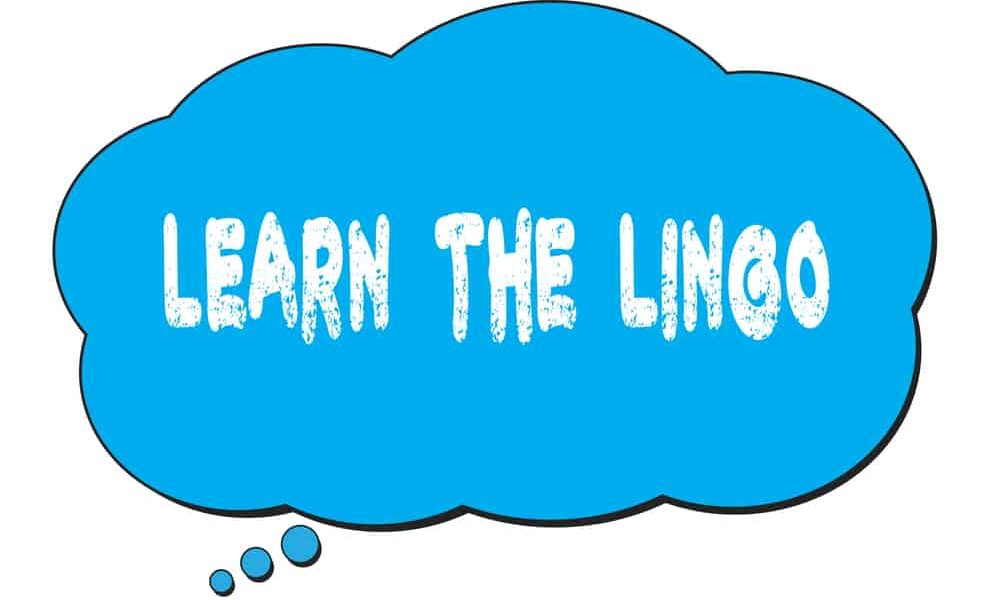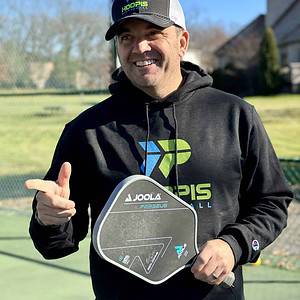Ever felt lost in a pickleball conversation? Trust me, we’ve all been there!
When I first started playing, I heard pickleball terms like “kitchen” and “dinking” being thrown around, and I thought my teammates were speaking a different language.
But don’t worry – I’ve got your back with this comprehensive guide to pickleball lingo.
Whether you’re a total newbie or just need a refresher, this list of 61 pickleball terms will help you sound like a pro on the courts.
Let’s get started…
61 Pickleball Terms You Need To Know
Court Terms
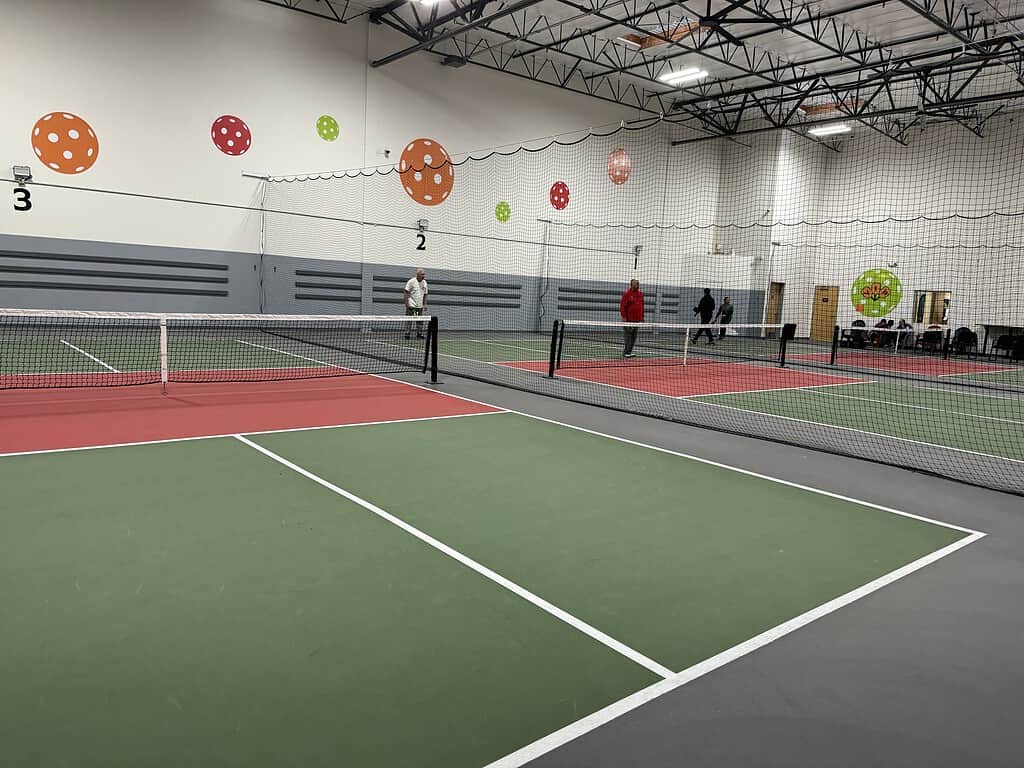
- Kitchen (Non-Volley Zone): That 7-foot zone on each side of the net. No volleying allowed in this area!
- Baseline: The back boundary line of the court.
- Sideline: The lines marking the sides of the court.
- Centerline: The line that divides each side of the court into two service boxes.
- Service Box: The area where serves must land (diagonally opposite from the server).
- Service Court: The area a player serves from, behind the baseline.
- Net: The barrier in the middle of the court (yeah, I know this one’s obvious, but it’s still official terminology!).
Serving Terms

- Two-Bounce Rule: The serve must bounce once on each side before players can start volleying.
- Let: When the serve touches the net but still lands in the correct service box.
- Ace: A serve so amazing that your opponent can’t return it.
- Fault: An illegal serve or service return.
- Double Fault: When both players on a team have faulted their serves.
- Side-Out: When service switches to the other team.
- Server Number: Either “1” or “2,” indicating which partner is serving.
Basic Shots and Techniques
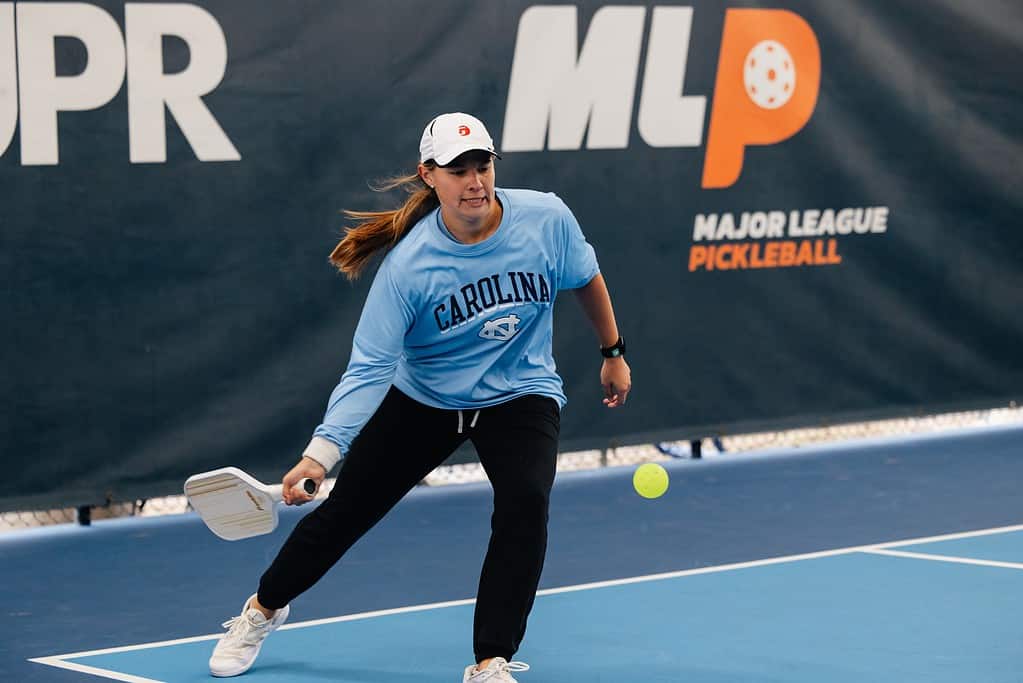
- Dink: A soft shot hit from the kitchen line that just barely clears the net.
- Drive: A fast, low shot that zips straight across the court.
- Lob: A high, arching shot that goes over your opponents’ heads.
- Volley: Hitting the ball before it bounces.
- Groundstroke: Hitting the ball after it bounces.
- Drop Shot: A soft shot that falls shortly after crossing the net.
- Smash: An aggressive overhead shot, like a volleyball spike.
Advanced Shots

- ATP (Around the Post): Hitting the ball around the net post instead of over the net.
- Erne: Named after Erne Perry, when you step outside the court to volley.
- Chainsaw: A defensive shot where you swing your paddle back and forth rapidly.
- Backhand: A shot hit with the back of your hand facing the direction of the shot.
- Forehand: A shot hit with your palm facing the direction of the shot.
- Cross-Court: A diagonal shot from one side of the court to the other.
- Down-the-Line: A shot that travels parallel to the sideline.
Strategy Terms
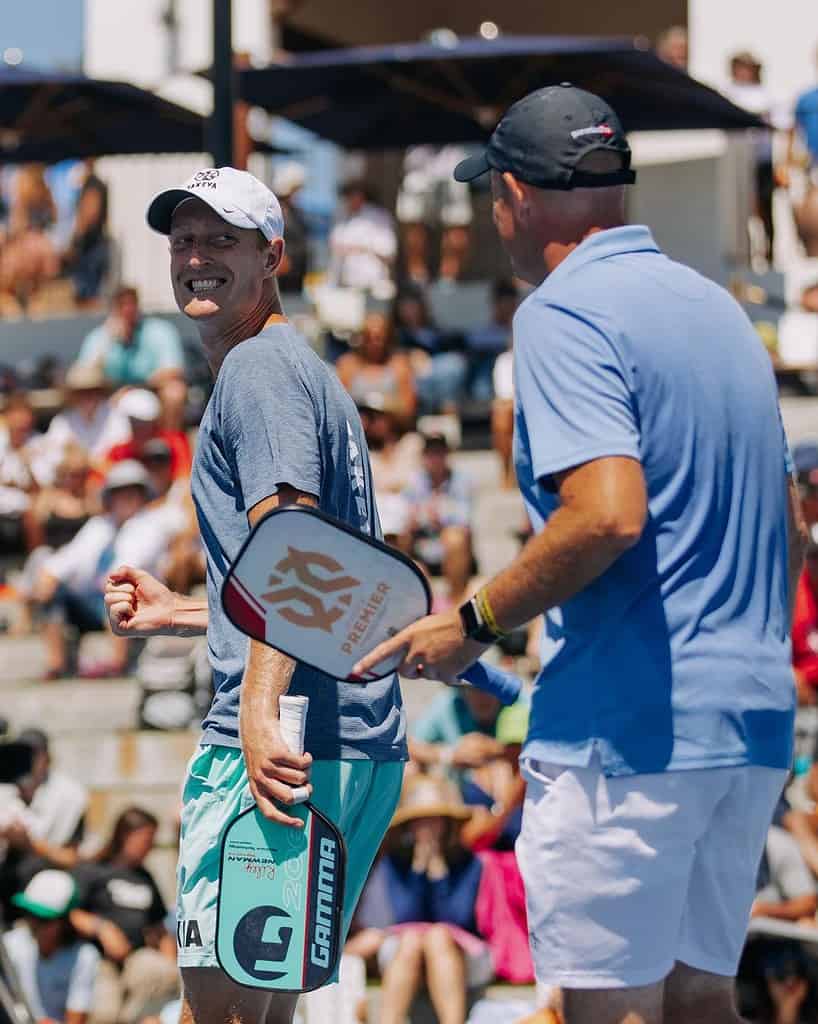
- Stacking: A positioning strategy where partners line up on the same side.
- Poach: When a player crosses over to hit their partner’s ball.
- Screen: An illegal serve where partners block the receiver’s view.
- Ready Position: The neutral stance used to prepare for incoming shots.
- Split-Step: A small hop used to prepare for the next shot.
- Third Shot Drop: A strategic soft shot used after the return of serve.
- Fifth Shot: The shot following the third shot drop.
Game Flow Terms
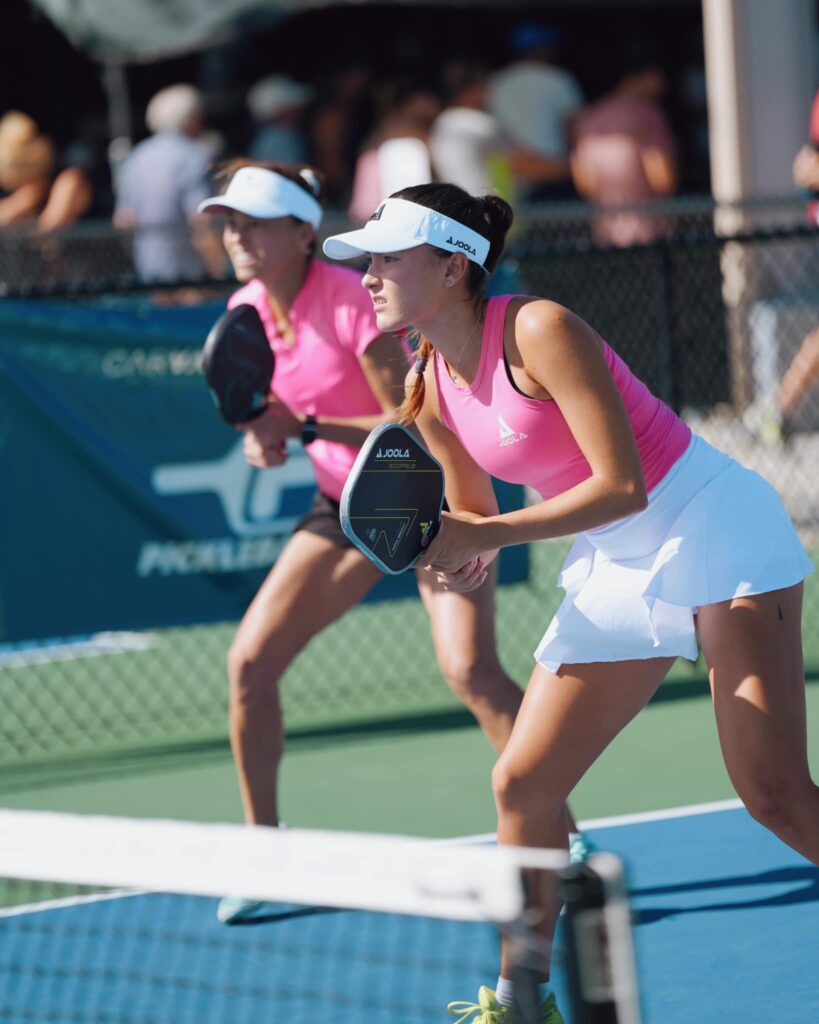
- Rally: The back-and-forth action once play begins.
- Dead Ball: When play stops for any reason.
- Live Ball: When the ball is in play.
- Time-Out: A break in play (each team gets two per game).
- Side Switch: When teams change sides of the court.
- Starting Position: Where players stand to begin the point.
- Reset: When players return to a neutral dinking game.
Scoring Terms
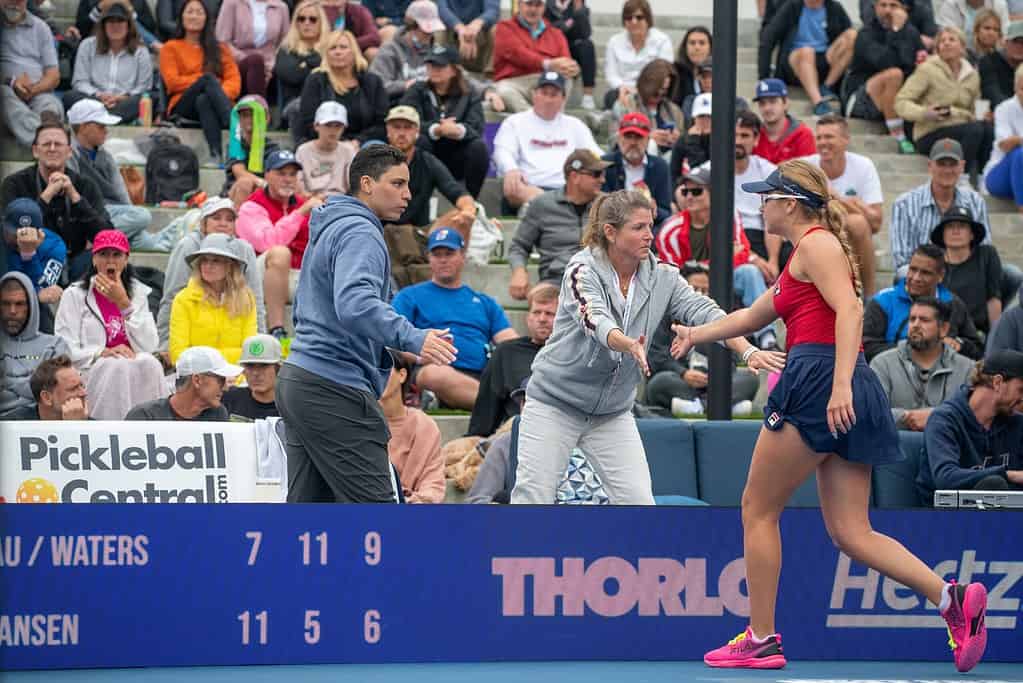
- Rally Scoring: Points can only be scored by the serving team.
- Win By Two: Games must be won by a two-point margin.
- Match Point: When one more point will win the match.
- Game Point: When one more point will win the game.
- Zero-Zero-Two: The starting score call, indicating the second server.
Equipment Terms
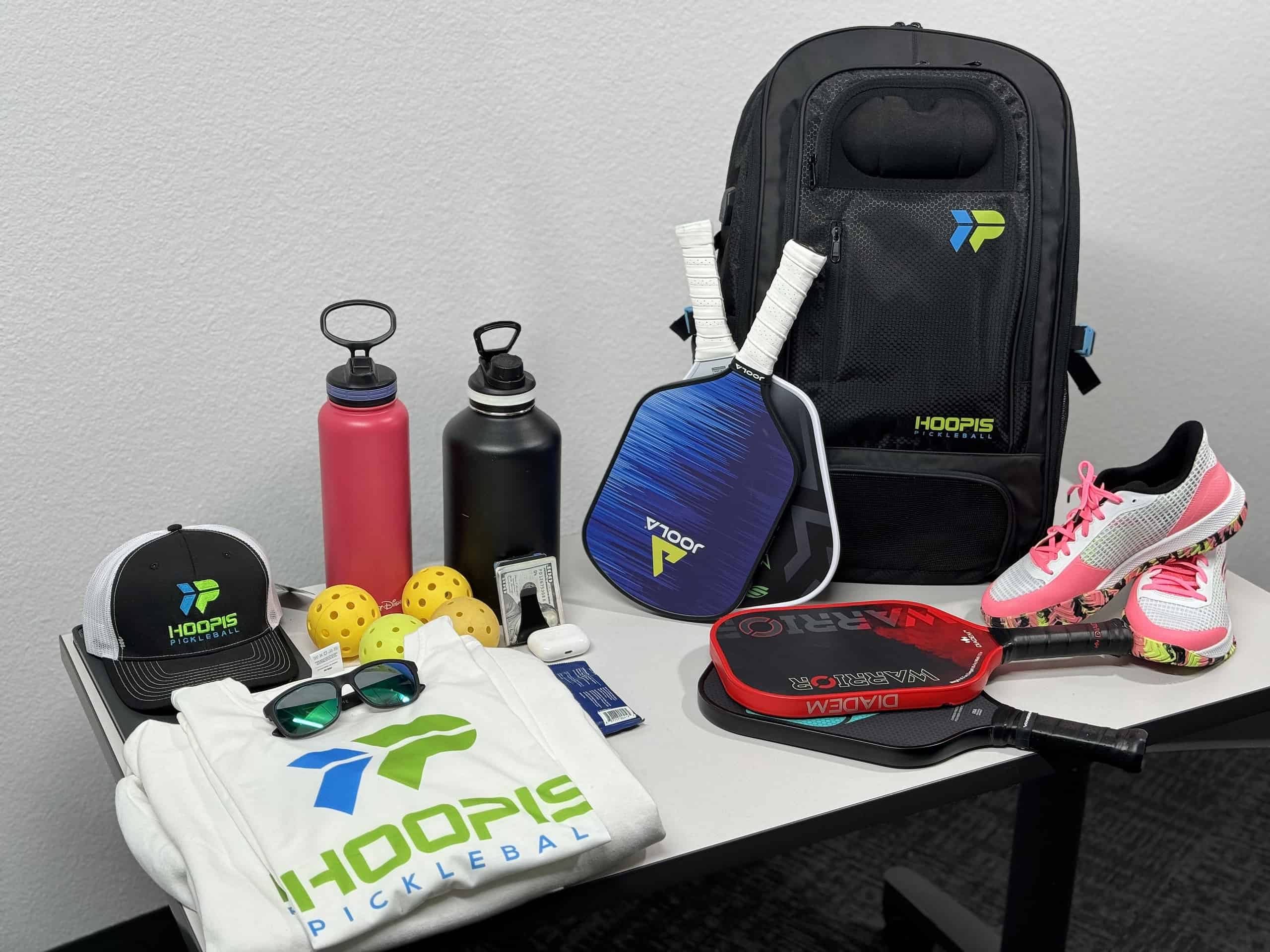
- Paddle: Your primary weapon of choice (not a racquet!).
- Sweet Spot: The optimal hitting area on your paddle.
- Core: The internal material of the paddle.
- Face: The hitting surface of the paddle.
- Edge Guard: The protective rim around the paddle.
- Grip: The handle of the paddle.
- Grip Size: The circumference of the handle.
Common Calls
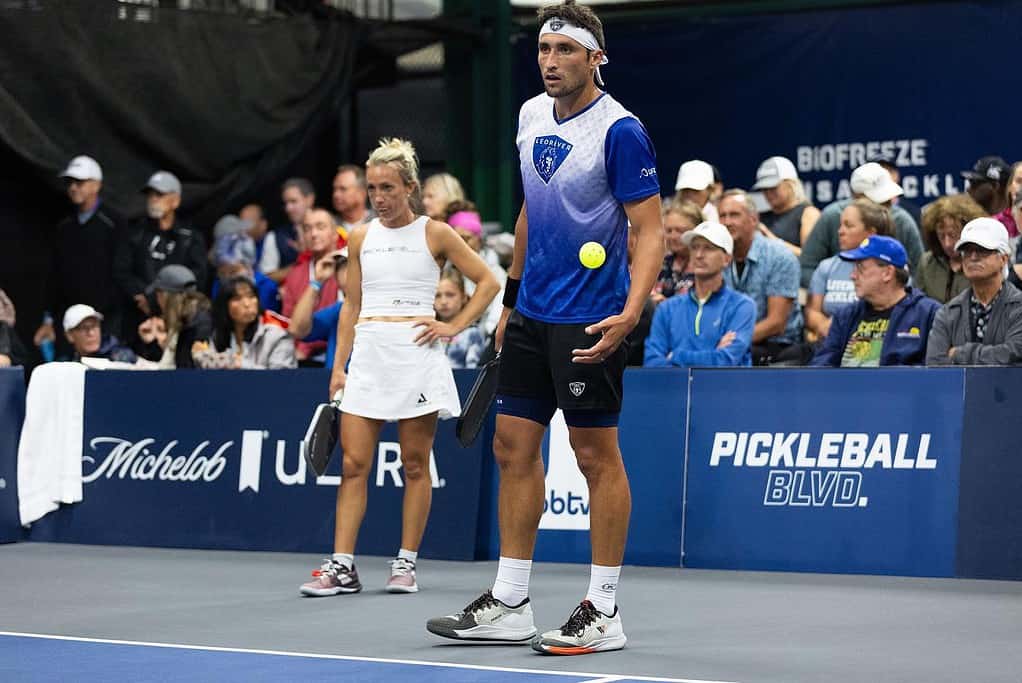
- “Out!”: When a ball lands outside the court lines.
- “Bounce It!”: Reminder for the two-bounce rule.
- “No-Vol!”: Warning that a player is in the kitchen.
- “Switch!”: Call to change positions with your partner.
- “Nice!”: Universal acknowledgment of a good shot.
- “Ball!”: Warning call when a ball from another court enters play.
- “Point!”: Called to claim a point after winning a rally.
Tips for Learning These Terms
- Don’t worry about memorizing everything at once. Start with the basics and build from there.
- Listen for these terms during games – context helps them stick!
- When in doubt, ask your fellow players. Most pickleballers love sharing their knowledge.
Remember, we all started as beginners! These terms will become second nature before you know it. Keep this guide handy, and you’ll be speaking pickleball language like a pro in no time.
Got any favorite pickleball terms I missed? Drop them in the comments below – I’d love to hear from you!
Happy playing! 🏓
Conclusion
So there you have it…Our list of 61 pickleball terms you must know!
I know at first they all sound funny, but the more you are out there the more they will become normal speak. Hopefully this will give you the confidence to get out there and have some fun!
Whether you’re perfecting your “dink” shots, mastering the “Erne,” or simply enjoying a casual game with friends, being familiar with the lingo helps you stay engaged and informed.
Keep checking back as I am sure we will be adding to our list! Until then…Happy pickling!

